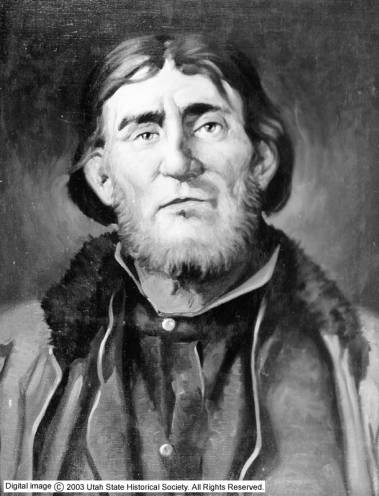Yvette D. Ison History Blazer, May 1995 During the summer of 1843, Mountain Men, Native Americans, and fur traders throughout the region spread the word about an exciting event to take place in August. Sir William Drummond Stewart, an English nobleman, was sponsoring a horse race that would pit his Missouri horses against those of the American West. The race, …
Traders, Trappers, and Mountain Men
Thomas G. Alexander Utah, The Right Place Following the Mexican Revolution in 1821, traders from Spanish and Mexican territory bartered actively in Utah. Following the reconquest of New Mexico and throughout the seventeenth century, New Mexican traders purchased elk, buffalo, beaver, and other skins from the Comanches and Utes. The reports of Rivera and Dominguez and Escalante led to the …
Great Basin
Gary B. Peterson Utah History Encyclopedia, 1994 The Great Basin is defined by hydrology and physiography. It is a region of interior drainage bounded prominently on the west by the Sierra Nevada and the Cascade Range and on the east by the middle Rocky Mountains and the Colorado Plateau. Less distinct are its northern boundary with the Columbia Plateau and …
Colorado Plateau
Joseph M. Bauman, Jr. Utah History Encyclopedia, 1994 The Colorado Plateau is a physiographic province encompassing 130,000 square miles of the Four Corners states, including Utah’s southeastern quarter. Arguably, it is the least-tamed country remaining in the lower forty-eight states. It is a land of outstanding natural beauty and ecological diversity. The high, semi-arid region is actually a gigantic basin …
Early Greek Immigrants
Helen Zeese Papanikolas Utah Historical Quarterly V. 22 #2 The Greek immigrant was the last of the Europeans to come to America. Fewer than two thousand Greeks were in the entire country before the 1880s. The first arrivals were young boys bought by American naval officers and philanthropists on the Turkish slave block. They were sent to the United States …
Beobachter Helped German Immigrants
DER BEOBACHTER HELPED GERMAN IMMIGRANTS ACCULTURATE IN UTAH Jeffrey D. Nichols History Blazer, March 1995 German Americans have long constituted one of the largest ethnic populations in the United States. Immigrants from the various German states flooded into America, especially during the 1830s-1850s. Substantial numbers stayed in eastern cities, while others went to the Midwest to farm or trade, creating …
Ethnic Cultures. Selected Bibliography
African American Bringhurst, Newell G. “An Ambiguous Decision: The Implementation of Mormon Priesthood Denial for the Black Man — A Reexamination,” UHQ 46 (1975): 45-64. Clark, Michael J. U.S. Army Pioneers: Black Soldiers in Nineteenth-Century Utah. Salt Lake City, 1981. ________. “Improbable Ambassadors: Black Soldiers at Fort Douglas, 1869-99,” UHQ (1978): 282-301. Coleman, Ronald G. “The Buffalo Soldiers: Guardians of …
Spanish Doubloons & Mormon Gold / Mormon Coins Supplant the Bartering System
http://www.sltrib.com Hal Schindler Published: 03/26/1995 Category: Features Page: J1 With 10,000 or so Mormons populating the Great Salt Lake Valley and neighboring settlements by summer of 1849 and with more on the road, the need for some sort of hard cash in the economy was acute. The barter system had worked for a while, but as more members of The …
This Is the Place
The Mormon Trail: A Photographic Exhibit Stan Layton After leaving Nauvoo, Illinois, in 1846, the Mormons headed west. They spent the winter of 1846–47 in Winter Quarters near Omaha and at various places in Iowa, resuming their journey in the spring. First to leave Winter Quarters that spring was the advance party under the personal direction of church president Brigham …
James Bridger
Matthew Despain and Fred R. Gowans Utah History Encyclopedia, 1994 James Bridger was one of the greatest frontiersmen of Utah and American history. During his lifetime he was a hunter, trapper, trader, Indian fighter, and guide, and one of only a few trappers to remain in the Rockies after the demise of the fur trade. In 1822 young Bridger heeded …

